Click on the exhibit.
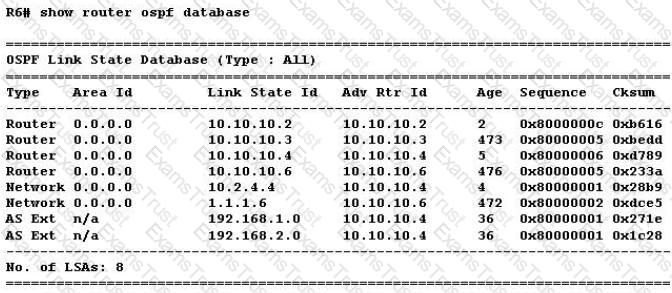
Given the output shown, which router is the ASBR in this network?
Which of the following about Type 4 LSAs is FALSE?
An Alcatel-Lucent 7750 SR is configured with an export policy to redistribute a loopback prefix into OSPFv3.
What type of LSA advertises the prefix to the other OSPFv3 routers in the same area?
Click on the exhibit.
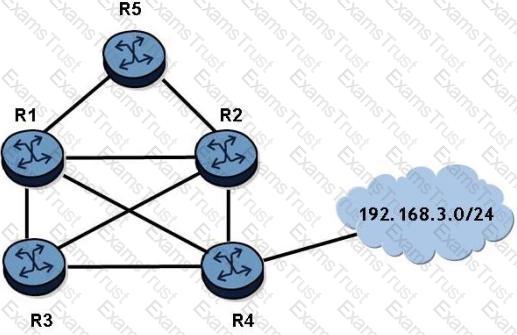
OSPF is operational on all links in the network diagram, all links have the same cost and all routers are configured with an ECMP value of 4. Router R4 advertises the prefix 192.168.3.0/24 into OSPF.
How many entries for prefix 192.168.3.0/24 will be l n router R1's routing table?
An IS-IS router receives a CSNP that references an older LSP than the one in its database. What action is taken?
Click on the exhibit.
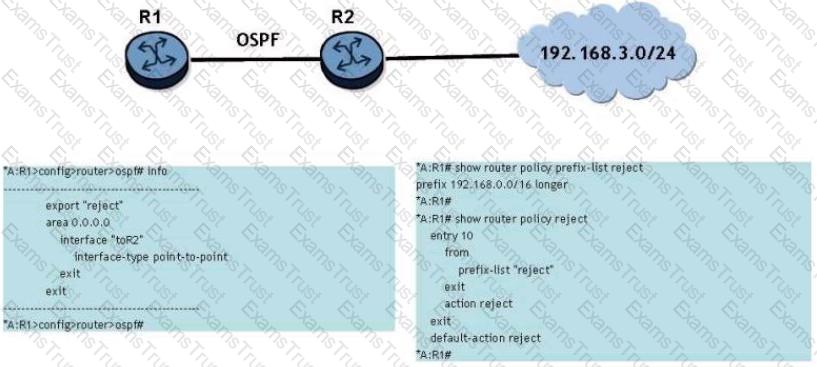
Router R2 uses OSPF to advertise the network 192.168.3.0/24 to router R1. A route policy has been configured to reject the route on router R1.
Why doesn't the route policy work?
Which type of OSPF LSA lists the routers attached to a broadcast network?
What is the primary purpose of variable length subnet masks (VLSM)?
Which of the following route types must be manually configured and will not re-route traffic when a link failure occurs in its path?
Click on the exhibit.
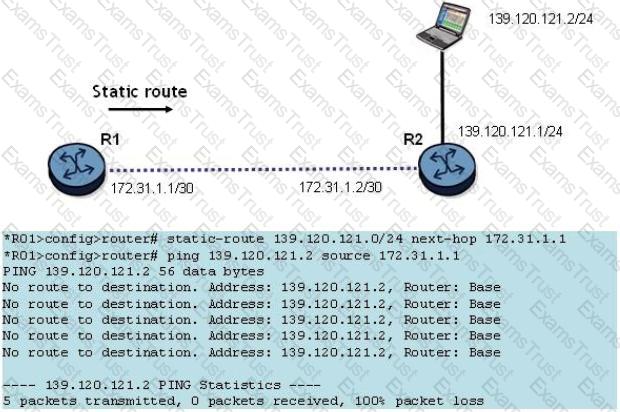
A static route has been configured on router R1 to reach the PC at 139.120.121.2. What might be causing the ping to fail?
Click the exhibit button.
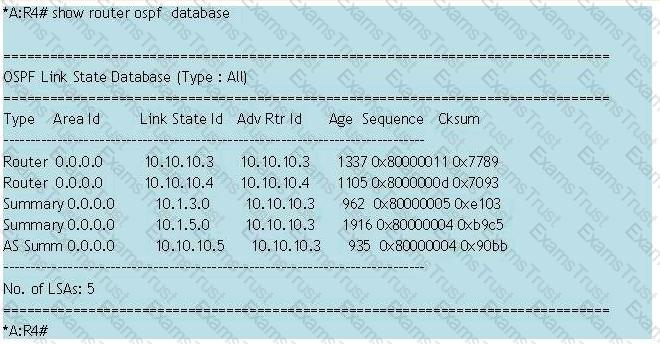
Assuming that the router ID of the router shown is 10.10.10.4, which of the following statements regarding the CLI output is true?
If routers R1 and R2 have a Level 1 and Level 2 IS-IS adjacency, which of the following statements are true? Choose two answers.
An interface is configured on a router for OSPF but the command "show router ospf neighbor" does not show any neighbors. Which of the following is NOT a possible cause?
Click the exhibit button.
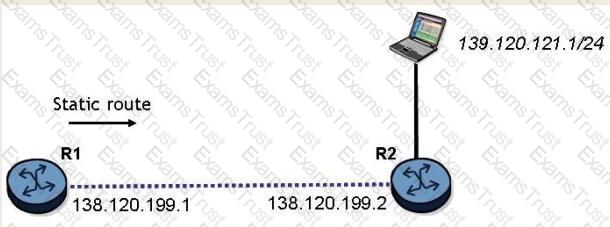
What is the command to configure a static route on the 7750 service router R1 to reach the network behind router R2?
Which of the following TLV fields is included in an IS-IS Hello packet on broadcast interfaces but not on point-to-point interfaces?
A router sets the E bit in the flags of its Type 1 LSA. What does this indicate?
Which three IS-IS PDU types are used for database synchronization?
On which type of IS-IS router is summarization most likely to be configured?
Which one of the following is a valid IPv6 multicast address?
Click the exhibit button.
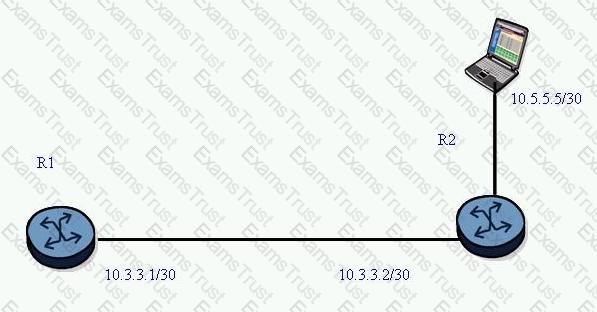
A static route is created on router R1 using the command "static-route 0.0.0.0/0 next-hop 10.3.3.2". What command can be used to test the static route on an Alcatel-Lucent 7750 SR?
Which of the following types of network topologies are supported by IS-IS on the Alcatel-Lucent 7750 SR? Choose two answers.
In which of the following types of areas does an OSPF router not set the E bit in its Type 1 LSA?
Which of the following statements regarding IS-IS LSPs is true?
Click the exhibit button.
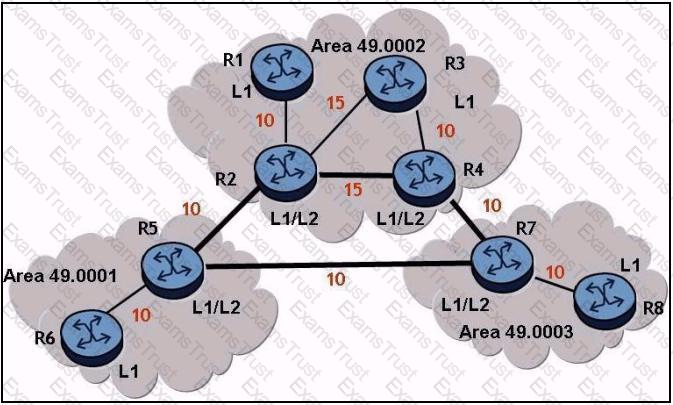
Given the diagram below, what path will traffic follow from router R6 to router R3, and from router R3 to router R6, if IS-IS is the routing protocol? The numbers beside the links are the metrics for that link.
What is the protocol number for OSPF in the IP header?
How are IS-IS LSPs sent on point-to-point links?
In IS-IS, which of the following statements regarding an L1/L2 router is false?
Which of the following are similarities between OSPF and IS-IS? Choose two answers.
Which type of IS-IS router is summarization most likely to be configured on?
Click the exhibit button.
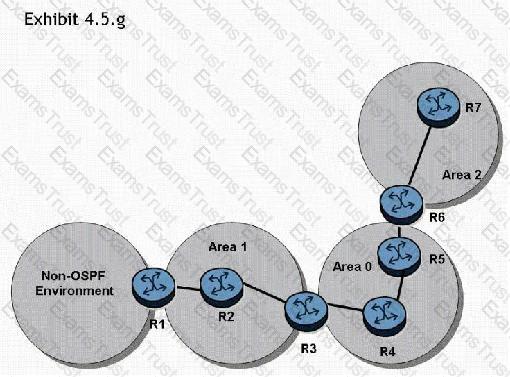
In the topology shown, router R1 is an ASBR configured to export external routes to OSPF. Assuming that there are no stub networks, which of the following statements regarding type 4 LSA generation is true?
Which of the following statements regarding the election of the designated router (DR) by OSPF routers are true? (Choose two)
What is the default priority value used for electing the DR on an Alcatel-Lucent 7750 SR running OSPF on an Ethernet?
What is the default preference value for a static route in the Alcatel-Lucent 7750 SR router?
When an OSPF adjacency is stuck in the "ExchStart" state, what is the most likely cause?
In an OSPF Hello packet what fields must match all neighbor routers on the segment? (Choose 3)
Which of the statements below best describes the pseudonode in an IS-IS network?
Exhibit
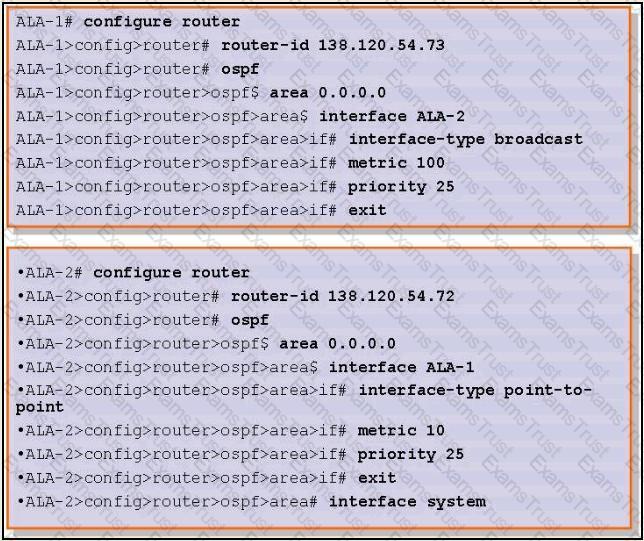
Given the two configurations shown, identify the two incorrect statements below: (Choose two)
Which of the following best describes how IS-IS routers exchange updates on an Ethernet interface?
An OSPF router receives an update in which the sequence number, age, and checksum are the same as the entry already in the topological database. What action is taken by the router?
What is the default inbound metric for RIP on the Alcatel-Lucent 7750 SR?
Click on the exhibit.
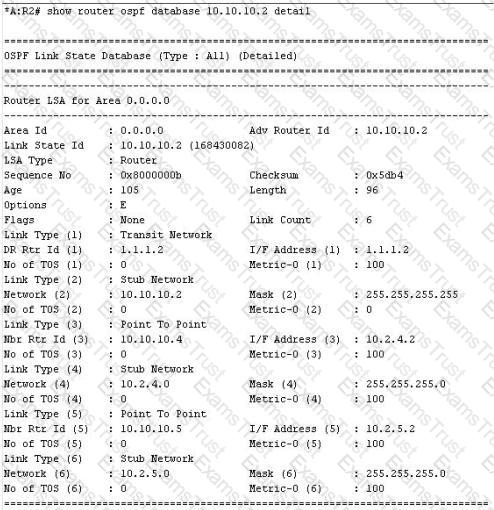
Given the contents of the Router LSA, which of the following best describes the local topology of the router?
An OSPF adjacency is stuck in the exstart state. What is the most likely cause?
Click on the exhibit.

Router R4 is being added to the network and it is connected to a non-OSPF domain.
Which area type should be used for Area 1 to allow the external routes to be advertised into Area 0?
When a router performs the SPF calculation, which router is used as the root of the shortest path tree?
Click on the exhibit.
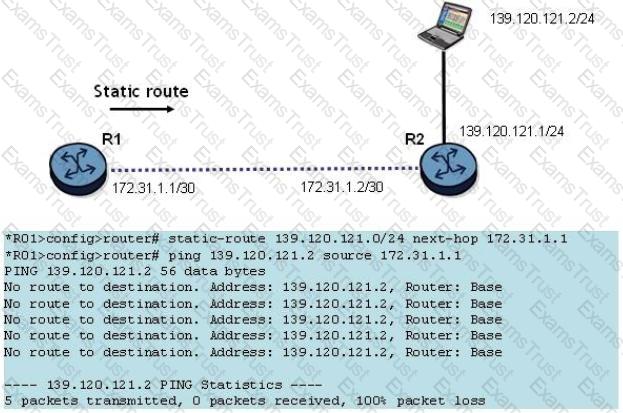
A static route has been configured on router R1 to reach the PC at 139.120.121.2. What might be causing the ping to fail?
Click on the exhibit.
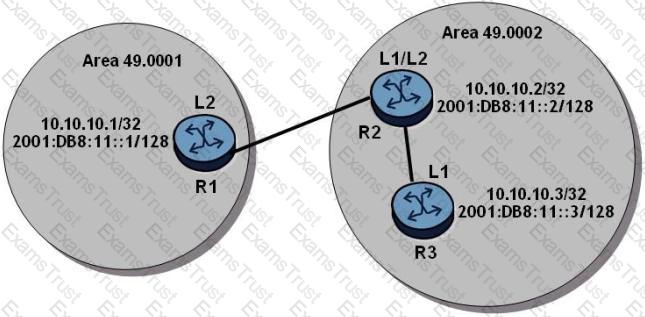
The routers have an established IS-IS L2 adjacency on which IPv4 system addresses are exchanged. An operator successfully configures multi-topology IS-IS routing so that the IPv6 system addresses are also exchanged between routers.
After IPv6 has been configured, which of the following is TRUE?
Click on the exhibit.
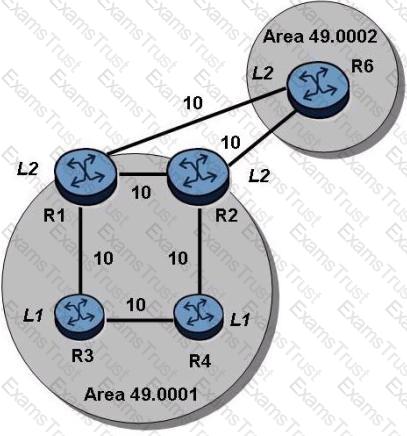
Examine the physical topology of the IS-IS network, the metrics of the links and the levels of the routers. All routers have a system address included in IS-IS.
Which of the following describes the route that router R4 will use to reach the system address of router R6?